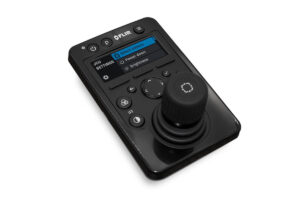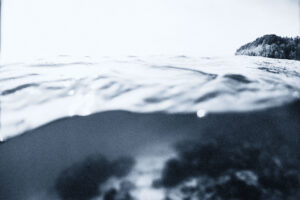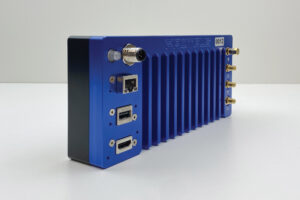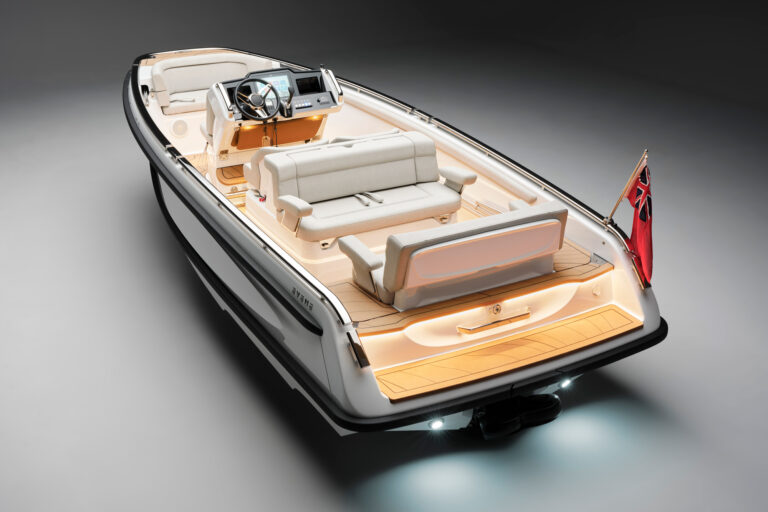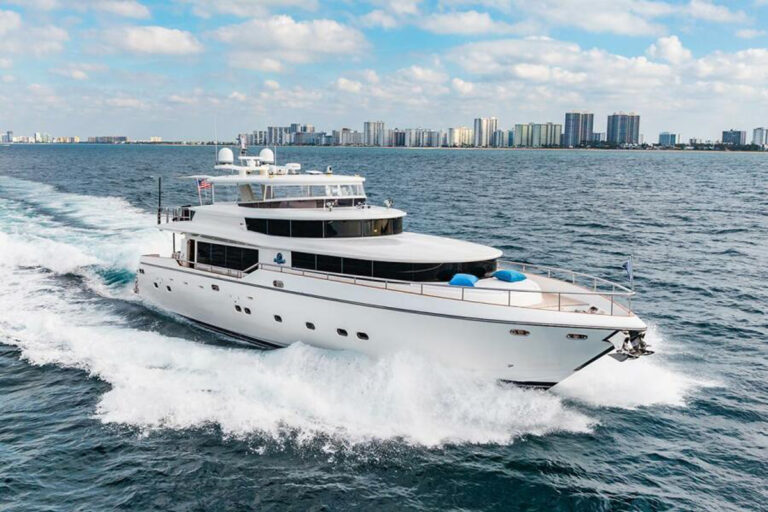Trends in marine electronics often flow in opposite directions. While screen displays are growing larger and more numerous and crowding helm station real estate, the electronics that drive them are getting smaller, sometimes to the point where they might be hard to see. Overall, the result is very beneficial. The ever-smaller electronic units make it easier to build black box systems. These, in turn, reduce demands on panel space, simplify installation and improve reliability. New micro electronics will make it practical to have DSC (distress button) capability in even the smallest handheld VHF radios and signals sent by AIS equipment can improve navigation safety in crowded waters. Finally, in the realm of “gee whiz” we’re starting to see wearable video displays such as “eyewear” developed for use with such devices as the video iPod. These may supplement the display screens we now use. Most of these breakthrough products are under $1,000. Maybe it’s time to upgrade?
1. Bigger and Better Displays
Yesterday’s 3- to 8-inch diagonal LCD screens have been replaced by daylight-readable displays ranging in size from 4 to almost 24 inches. Maximum display resolution, once limited to about 640 x 480 pixels is now 1200 x 1600, 4:3 (SXGA), very close to the maximum 1920 x 1080 required for HDTV. Contrast ratios as high as 700:1 have improved readability. More effective nonreflective, contrast-enhancing filters make the screen images easier to see, even in direct sunlight, and dimming ranges of 2,000:1 meet the critical demands of night operations. Color rendition using millions of hues matches that of the best TV sets, making it practical to display high-quality images from a yacht’s remote cameras on the nav display screens. Embodying all of this state-of-the-art technology is MapTech’s touch screen i3 chart plotter/radar/fish finder, with on-screen icons that significantly reduce the size of the unit. Touch-screen technology has now been adopted by Northstar in its 8000i systems. Others are sure to follow.
2. Smaller and Better GPS
I first used a GPS receiver in the early 1980s. It was the size of a shoebox, cost $10,000 and we had to wait six hours for a satellite to fly over so that we could verify that it was working. Today, we have miniature integrated circuits and discrete, surface-mount components barely larger than the period at the end of this sentence. These components have brought us shirt-pocket-size handheld VHF radios such as the Icom M88, the Standard HX471S and the 7-inch-Uniden Mystic, a handheld VHF/DSC/GPS chart plotter. But just glance at the latest micro-size GPS receiver developed by Rakon in Auckland, New Zealand: Things are getting even smaller. Smaller than a dime, this GPS receiver can be built into even the tiniest handheld radio to provide red button “distress” DSC hailing capability that might save your life if you’re sailing in waters covered by the Coast Guard’s new Rescue 21 system.
3. Good Things Come in Black Boxes
Finding space for all the controls and displays on a well-equipped yacht is a challenge. “Black box” packaging separating the works from the controls and the display is an increasingly popular solution. Stowed in tight little packages, the brains of a radar scanner, sonar transducer and other sensors can be mounted in a benign environment, away from the damaging effects of direct sunlight. Another advantage: Installing a black box VHF close to the antenna reduces RF losses in the coaxial cable, increasing the amount of power delivered to the antenna. All of the radio’s operating controls are located on the set’s wired or wireless microphone or handset, which is usually mounted on the instrument panel. Where a conventional VHF radio might occupy 32 square inches of panel space, the microphone used to control a remote-mounted black box radio would measure only 2 1/3 inches by 4 inches.
4. Everything Plus the Kitchen Sink
We already have multifunction units that integrate the chart plotter, radar, fish finder and engine instrument systems, with a common set of control keys and display. However, the VHF/DSC radio has continued to be separate. Now, Standard Horizon has introduced the NavCom CPV 350, a WAAS GPS navigation computer/chart plotter/fish finder/Class D VHF/DSC communication radio. This single unit can provide all the electronic functions needed. Another breakthrough is Uniden’s 7-inch, one-pound Mystic handheld WAAS GPS receiver, VHF/DSC radio and chart plotter. The company introduces the product on its Web site with this provocative question: “You have two seconds to grab either your radio or your GPS, what do you go for?” This multi-function product just might save your life.
5. AIS for the U.S.
Since it was made available in the U.S. about 18 months ago, AIS has revolutionized marine traffic communications. AIS, a vessel’s automatic identification system, is the maritime equivalent of a radar transponder in the air-traffic control system. The AIS transponder (a combination of a transmitter and receiver) broadcasts a signal that tells every AIS receiver in range the vessel’s MMSI (or maritime address), position and a lot more. The signal is transmitted on VHF channel 87B or 88B and can be received and decoded with a relatively inexpensive AIS receiver. Connect the AIS receiver’s output to a compatible chart plotter or radar display and an icon of the reporting vessel pops up on the screen, changing what was an anonymous blip to a named vessel. A key click will disclose the vessel’s course, heading, speed and type, plus its length, beam, draft and destination. The value of this information, especially in congested waters, is obvious. Need to communicate with the vessel? If you already know its MMSI, enter it in your VHF/DSC radio, choose a working channel, press the radio’s enter button and you will be in contact. If you navigate busy commercial waters an AIS receiver should be high on your priority list.
6. The Wearable Nav Station
Like to see the information on your yacht’s display screens as it would appear on a 105- inch TV set at a distance of 12 feet? Put on a 3.6-oz. monocular video “eyewear” device and you can see the chart plotter, radar, sonar or any other video image at the same time you look at the outside world. Adapted from military and virtual-reality applications, these eyewear units have been introduced for use with devices such as the video iPod. Because of its unique features, eMagin’s Eyebud 800 may be one of the first units to find its way onto yachts, though Icutti iWear and personal media viewers have some of the same features. The idea behind the Eyebud 800 is you view the screen image with one eye while your other eye has a clear view ahead. Move the monocular off to the side a bit and you can use both eyes to see the water with only a glance to the side needed to see your instrument displays. The video image is focused at infinity, eliminating the visual fatigue that occurs when you refocus your eyes from a close-up radar or chart-plotter display to the outside world. The full color SVGA (800 x 600 pixel) image can be located in front of either eye. The OLED screen technology used in the device creates a clearer image than a conventional LCD. The eyewear can be worn like glasses or attached to a yachting cap’s visor. The unit’s built-in noise-canceling microphone and earphone make it ideal for use with a VHF or intercom system-or with an iPod and a home computer. The eyewear viewer can be switched to any display source. Multiple units connected to the systems can be used on the flying bridge or tuna tower, challenging locations for conventional displays. In a year or two you may be able to clip a WiFi navigation system/autopilot/propulsion control unit to your belt, don the eyewear viewer and operate your yacht from virtually anywhere.
Contacts: eMagin www.emagin.com Furuno www.furuno.com Icom www.icomamerica.com Maptech www.maptech.com Rakon www.rakon.com Raymarine www.raymarine.com/h6 Standard Horizon www.standardhorizon.com Uniden www.uniden.com

